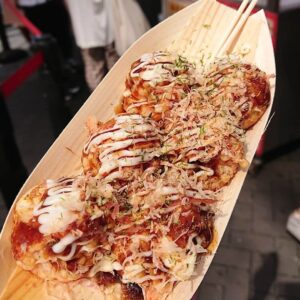Yakitori (焼き鳥)
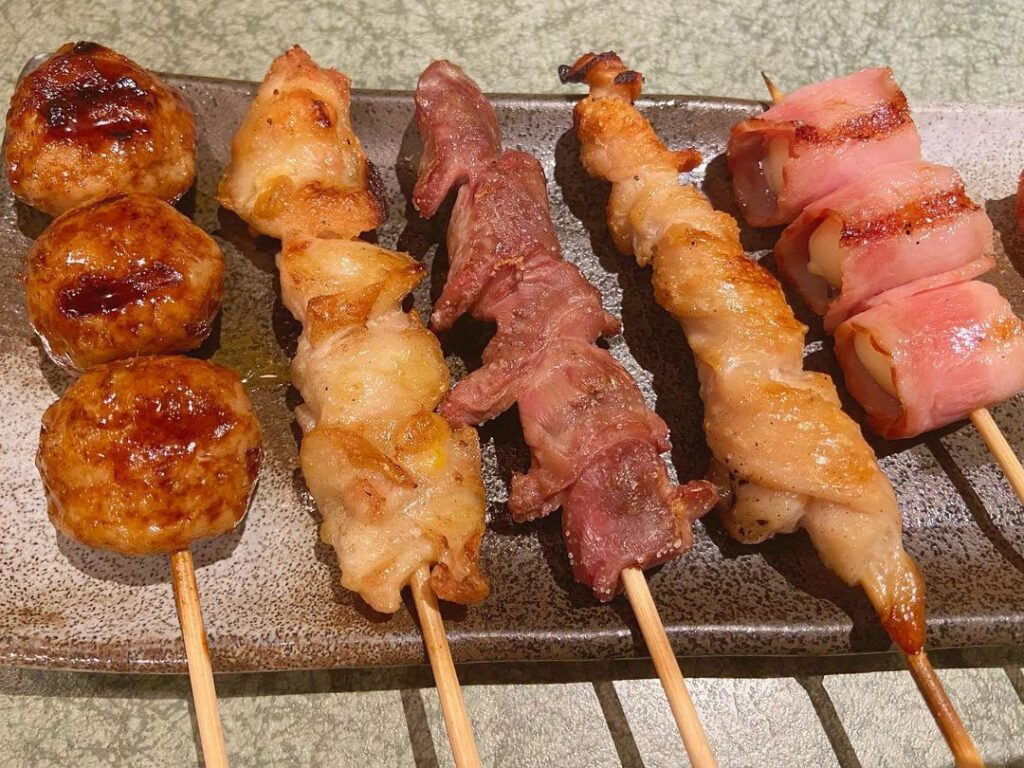
Yakitori (焼き鳥), meaning “grilled bird” in Japanese, is a dish composed of different kinds of meat and vegetables (not just chicken) that are skewered and cooked on a grill. The two most popular ways of eating the Yakitori is either to season it with a little bit of salt or cook it covering the Yakitori with Tare (タレ), which is a soy sauce based sauce. Yakitori is definitely one of the most popular dishes in Japan, but it is also a dish that you could very easy to cook at home.
A little bit about Yakitori
Yakitori (焼き鳥) is one of the most popular dishes in Japan, not only because its very tasty, but also because you can enjoy a variety of meat in one meal. For example, the most orthodox ones are made with chicken thighs but every Japanese person will tell you not to get too many of the same skewers. If you go to an Izakaya in Japan, you should try different kinds of meat, each with their own distinct texture and flavor. For example, chicken cartilage (Nankotsu -なんこつ-), chicken skin (Tori Kawa-とりかわ-), chicken gizzard (Sunagimo-砂ぎも-) and liver (Reba-レバー-) are some recommended ones you should try.
Furthermore, even though the dish literally means grilled bird, it is not limited to chicken. The skewered pork belly is highly recommended. Grilled vegetables, such as Shiitake Mushrooms and garlic cloves are some of the favorites as well.
There are two ways of seasoning the Yakitori. One is to just season it with a little bit of salt. Another is grilling the Yakitori with a soy sauce based sauce called Tare (タレ). Both are exceptional ways of eating the Yakitori so we recommend that you try both out, but we would recommend just the salt for the vegetables. Once the meat is skewered on to a skewer made out of bamboo or wood, they are roasted over a charcoal fire. As cooking it over the charcoal gives it the really smoky aroma to the meat, we recommend that you use an outdoor grill or BBQ set if you have one, but it will still taste really good even if you cook it on your normal stove.
List of Ingredients you will need
(Serving for 4 people)
・Chicken thighs … 20-21 ounces (600 grams)
・Leeks… 2 pieces
・Shiitake Mushrooms … 4 pieces
・Garlic … 8 cloves
・Soy Sauce… 2 Tablespoon
・Mirin… 2 Tablespoon
・Cooking Sake… 1 Tablespoon
・Sugar… 1 Tablespoon
・Salt…A ppropriate Amount
・Hichimi… Appropriate Amount
(Serving for 4 people)
・Chicken thighs …
20-21 ounces (600 grams)
・Leeks… 2 pieces
・Shiitake Mushrooms …
4 pieces
・Garlic … 8 cloves
・Soy Sauce… 2 Tbsp
・Mirin… 2 Tbsp
・Cooking Sake… 1 Tbsp
・Sugar… 1 Tbsp
・Salt…Appropriate Amount
・Hichimi…
Appropriate Amount
Recipe
1. Cut the leeks so the the individual pieces are roughly 1 inch (2-3
cm) wide. If the insides are a bit hard, you may consider taking a
little bit of the inside out before skewering.
2. Cut the thighs into bite sized pieces. (You want to have the
chicken roughly the same size as the leeks)
3. Once it is cut, skewer the chicken and the leek onto the skewer.
Ideally, you want to have 3 pieces of chicken and 2 pieces of leek
on each skewer, with the chicken sandwiching the leeks. As for
the mushroom and garlic, skewer the mushroom with just the
mushroom and vice versa for the garlic cloves.
Salted version
4. Season the Yakitori with salt.
5. Grill the Yakitori on a heated pan on medium heat. Grill for
roughly 2 minutes until the surface is a little bit burnt and turn
over to the other side.
6. Cook the other side until it also becomes a little bit burnt.
The salted version is ready to be consumed!
Tare (タレ) version
7. Mix the Soy Sauce, Mirin, Cooking Sake and the sugar into a
bowl to make the Tare (タレ).
8. Follow step 5 and step 6 and once cooked, take it out of the pan.
9. Use the same pan and pour the Tare mixture. Once it starts
bubbling up and becomes a little more viscous, put the Yakitori
back into the pan.
10. Wait for the Tare (タレ) to become caramel like color. It will start
start sticking to the the skewers so turn the skewers to the other
side to get the Tare on both sides.
11. Once the Yakitori is well covered with the Tare, it is ready to be
consumed!
Tip: If you are eating the salted version, you can pour a little bit of Hichimi onto the Yakitori. Hichimi is composed of 7 different kinds of Chili so it gives the Yakitori a nice kick once it you feel that the Yakitori is oily or simply feel bored of the same flavor.
1. Cut the leeks so the the individual pieces are roughly
1 inch (2-3 cm) wide. If the insides are a bit hard, you
may consider taking a little bit of the inside out
before skewering.
2. Cut the thighs into bite sized pieces. (You want to
have the chicken roughly the same size as the leeks)
3. Once it is cut, skewer the chicken and the leek onto
the skewer. Ideally, you want to have 3 pieces of
chicken and 2 pieces of leek on each skewer, with
the chicken sandwiching the leeks. As for the
mushroom and garlic, skewer the mushroom with
just the mushroom and vice versa for the garlic
cloves.
Salted version
4. Season the Yakitori with salt.
5. Grill the Yakitori on a heated pan on medium heat.
Grill for roughly 2 minutes until the surface is a little
bit burnt and turn over to the other side.
6. Cook the other side until it also becomes a little bit
burnt.
The salted version is ready to be consumed!
Tare (タレ) version
7. Mix the Soy Sauce, Mirin, Cooking Sake and the
sugar into a bowl to make the Tare (タレ).
8. Follow step 5 and step 6 and once cooked, take it
out of the pan.
9. Use the same pan and pour the Tare mixture. Once
it starts bubbling up and becomes a little more
viscous, put the Yakitori back into the pan.
10. Wait for the Tare (タレ) to become caramel like
color. It will start start sticking to the the skewers so
turn the skewers to the other side to get the Tare on
both sides.
11. Once the Yakitori is well covered with the Tare, it is
ready to be consumed!
Tip: If you are eating the salted version, you can pour a little bit of Hichimi onto the Yakitori. Hichimi is composed of 7 different kinds of Chili so it gives the Yakitori a nice kick once it you feel that the Yakitori is oily or simply feel bored of the same flavor.
1. Cut the leeks so the the
individual pieces are roughly
1 inch (2-3 cm) wide. If the
insides are a bit hard, you
may consider taking a little
bit of the inside out before
skewering.
2. Cut the thighs into bite
sized pieces. (You want to
have the chicken roughly the
same size as the leeks)
3. Once it is cut, skewer the
chicken and the leek onto
the skewer. Ideally, you
want to have 3 pieces of
chicken and 2 pieces of
leek on each skewer, with
the chicken sandwiching
the leeks. As for the
mushroom and garlic,
skewer the mushroom with
just the mushroom and vice
versa for the garlic cloves.
Salted version
4. Season the Yakitori with
salt.
5. Grill the Yakitori on a
heated pan on medium
heat. Grill for roughly 2
minutes until the surface is
a little bit burnt and turn
over to the other side.
6. Cook the other side until it
also becomes a little bit
burnt.
The salted version is ready to be consumed!
Tare (タレ) version
7. Mix the Soy Sauce, Mirin,
Cooking Sake and the
sugar into a bowl to make
the Tare (タレ).
8. Follow step 5 and step 6
and once cooked, take it
out of the pan.
9. Use the same pan and pour
the Tare mixture. Once it
starts bubbling up and
becomes a little more
viscous, put the Yakitori
back into the pan.
10. Wait for the Tare (タレ) to
become caramel like color.
It will start start sticking to
the the skewers so turn the
skewers to the other side to
get the Tare on both sides.
11. Once the Yakitori is well
covered with the Tare, it is
ready to be consumed!
Tip: If you are eating the salted version, you can pour a little bit of Hichimi onto the Yakitori. Hichimi is composed of 7 different kinds of Chili so it gives the Yakitori a nice kick once it you feel that the Yakitori is oily or simply feel bored of the same flavor.
Other recommended recipes
If this is the kind of dish you like, we have compiled some a list of dishes that you might also like for your next cooking session below.
Yakisoba (焼きそば)
Yakisoba is a dish made of noodles cooked on a hot plate mixed together with flavored with cabbage, bean sprout, pork, seafood and etc, which is then flavored with Japanese Bulldog sauce.
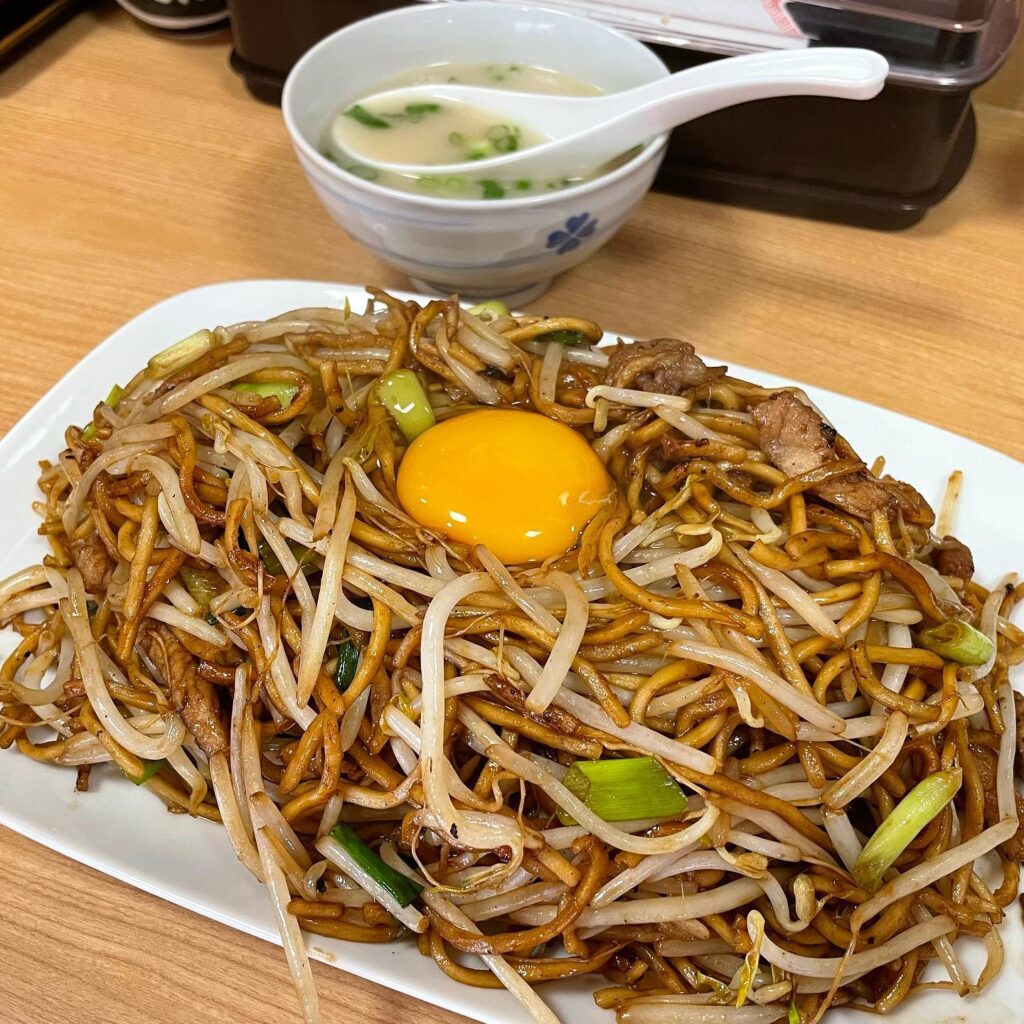

Oyakodon (親子丼)
Oyakodon (親子丼), means “parent-and-child donburi” in Japanese. This is because the meat (=parent) and the egg (=child) are cooked together, which is then poured on to a bowl of rice.
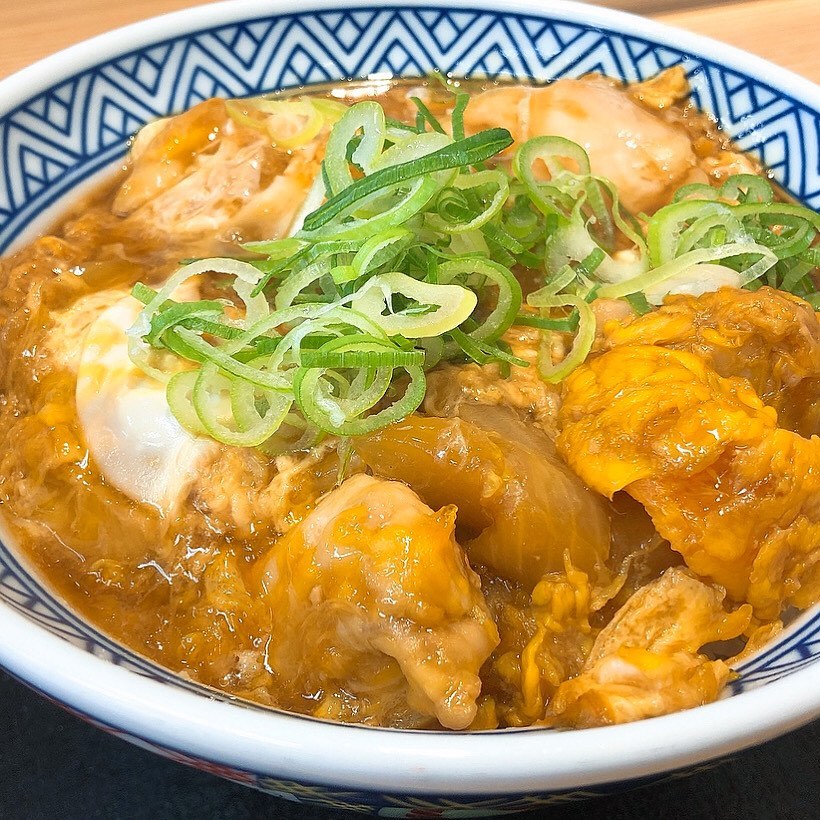

Shougayaki (生姜焼き)
Shougayaki literally means ginger sear/fry. Shougayaki is cooked with this slices of pork and simmered in a sauce made of soy sauce, mirin, onion, garlic and grated ginger cooked fried in the pan.


Yakitori (焼き鳥)

Yakitori (焼き鳥), meaning “grilled bird” in Japanese, is a dish composed of different kinds of meat and vegetables (not just chicken) that are skewered and cooked on a grill. The two most popular ways of eating the Yakitori is either to season it with a little bit of salt or cook it covering the Yakitori with Tare (タレ), which is a soy sauce based sauce. Yakitori is definitely one of the most popular dishes in Japan, but it is also a dish that you could very easy to cook at home.
Ingredients
- (Serving for 4 people)
- ・Chicken thighs … 20-21 ounces (600 grams)
- ・Leeks… 2 pieces
- ・Shiitake Mushrooms … 4 pieces
- ・Garlic … 8 cloves
- ・Soy Sauce… 2 Tablespoon
- ・Mirin… 2 Tablespoon
- ・Cooking Sake… 1 Tablespoon
- ・Sugar… 1 Tablespoon
- ・Salt…A ppropriate Amount
- ・Hichimi… Appropriate Amount
Instructions
1. Cut the leeks so the the individual pieces are roughly 1 inch (2-3 cm) wide. If the insides are a bit hard, you may consider taking a little bit of the inside out before skewering.
2. Cut the thighs into bite sized pieces. (You want to have the chicken roughly the same size as the leeks)
3. Once it is cut, skewer the chicken and the leek onto the skewer. Ideally, you want to have 3 pieces of chicken and 2 pieces of leek on each skewer, with the chicken sandwiching the leeks. As for the mushroom and garlic, skewer the mushroom with just the mushroom and vice versa for the garlic cloves.
Salted version
4. Season the Yakitori with salt.
5. Grill the Yakitori on a heated pan on medium heat. Grill for roughly 2 minutes until the surface is a little bit burnt and turn over to the other side.
6. Cook the other side until it also becomes a little bit burnt.
Share this recipe with your family and friends!
Latest Posts

7 things you need to do when you come visit Japan
If you are considering or already decided upon visiting Japan, here is a list of what you should not miss out on when you come and visit.

6 dishes to take to on a Hanami (Cherry Blossom viewing)
If you go to Japan in the summer, there will be many Masturi, which is a Japanese festival taking place. While traditional dancing and festivities taking place is one reason why you should go to one, another is enjoying these festivities with some nice Japanese food which are sold in the adhoc food stand which is referred to as ‘Yatai (屋台)’ in Japanese.
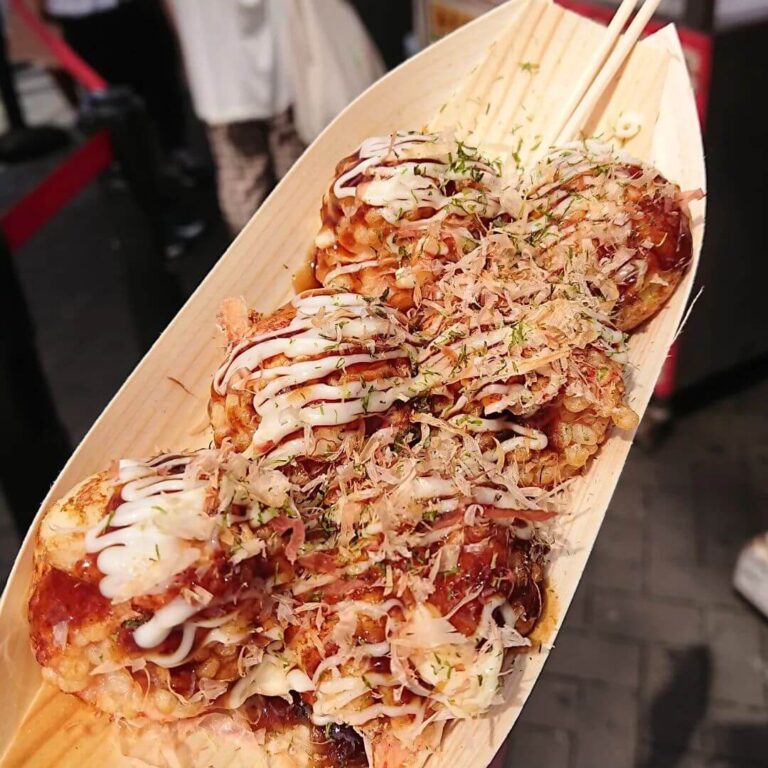
6 dishes you need to try when you go to a Matsuri (Japanese Festival)
If you go to Japan in the summer, there will be many Masturi, which is a Japanese festival taking place. While traditional dancing and festivities taking place is one reason why you should go to one, another is enjoying these festivities with some nice Japanese food which are sold in the adhoc food stand which is referred to as ‘Yatai (屋台)’ in Japanese.
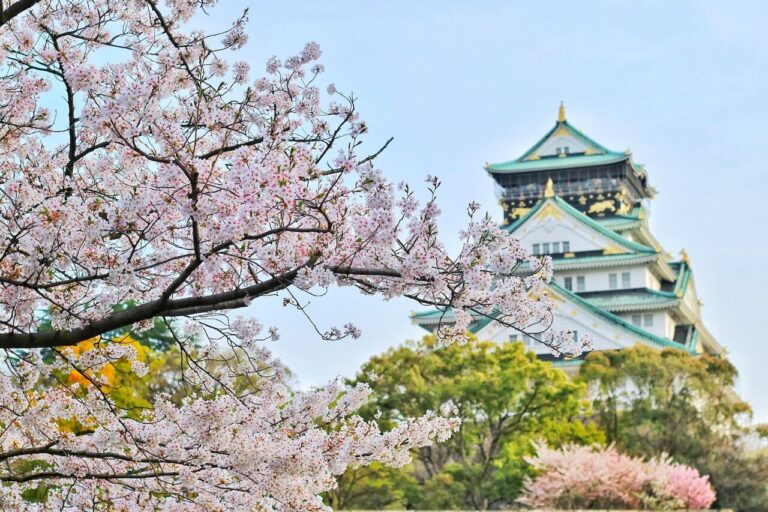
When and when not to visit Japan
While we guarantee that you wont regret visiting Japan, there are certain time periods where it is more favorable to go than others. Although eating out and shopping is cheap, getting there is fairly expensive so you want to make sure that you get the most out of your trip.

8 Japanese chain restaurants in LA serving authentic Japanese food
We have selected 8 Japanese Restaurant Chain that serves authentic Japanese food if you are thinking of going to a Japanese place in LA.

6 Japanese chain restaurants in New York City serving authentic Japanese food at reasonable prices
In comparison to their normal prices back in Japan, they might feel a bit pricey but if you want some proper Japanese food for relatively low prices, these are some of the restaurants that you should definitely consider visiting.


